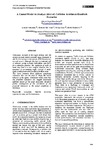Mostrar o rexistro simple do ítem
A causal model to analyze aircraft collision avoidance deadlock scenarios
| dc.contributor.author | Piera Eroles, Miguel Ángel | |
| dc.contributor.author | Homdedeu, Julia de | |
| dc.contributor.author | Tous, Maria del Mar | |
| dc.contributor.author | Koca, Thimjo | |
| dc.contributor.author | Radanovic, Marko | |
| dc.date.accessioned | 2020-07-02T08:54:58Z | |
| dc.date.available | 2020-07-02T08:54:58Z | |
| dc.date.issued | 2017 | |
| dc.identifier.citation | Piera Eroles, M. A., Homdedeu, J. de, Tous, M. del Mar, Koca, T., Radanovic, M. A causal model to analyze aircraft collision avoidance deadlock scenarios. En Actas de las XXXVIII Jornadas de Automática, Gijón, 6-8 de Septiembre de 2017 (pp.569-574). DOI capítulo: https://doi.org/10.17979/spudc.9788497497749.0569 DOI libro: https://doi.org/10.17979/spudc.9788497497749 | es_ES |
| dc.identifier.isbn | 978-84-16664-74-0 (UOV) | |
| dc.identifier.isbn | 978-84-9749-774-9 (UDC electrónico) | |
| dc.identifier.uri | http://hdl.handle.net/2183/25861 | |
| dc.description.abstract | [Abstract] Continuous increase in the traffic density over the certain en-route sectors provokes many situations in which a loss of separation minima (SM) between two aircraft occurs. Although, this loss is predicted well in advance, giving a proper look-ahead time (LAT) for a detection function, the resolution of such an event may lead to a new conflict situation due to dynamics of surrounding traffic aircraft. A multiagent system framework can deal with these cases. This work presents three different complexity indicators that can be used to shape the social behavior of the agents. Simulation results show that the proposed indicators can suggest drastically different nature of the same ecosystem, therefore further investigation of the correlation of the proposed indicators to the actual complexity is necessary. | es_ES |
| dc.description.sponsorship | Ministerio de Economía y Competitividad; TIN2014-56919-C3-1-R | es_ES |
| dc.language.iso | eng | es_ES |
| dc.publisher | Servicio de Publicaciones de la Universidad de Oviedo | es_ES |
| dc.relation | info:eu-repo/grantAgreement/EC/H2020/699313 | es_ES |
| dc.relation.hasversion | http://hdl.handle.net/10651/46832 | |
| dc.relation.uri | https://doi.org/10.17979/spudc.9788497497749.0569 | es_ES |
| dc.rights | Atribución-NoComercial-CompartirIgual 4.0 España | es_ES |
| dc.rights.uri | http://creativecommons.org/licenses/by-nc-sa/4.0/es/ | * |
| dc.subject | Ecosystem | es_ES |
| dc.subject | Feasible solutions | es_ES |
| dc.subject | Opportunity costs | es_ES |
| dc.subject | Conflict maneuvers | es_ES |
| dc.title | A causal model to analyze aircraft collision avoidance deadlock scenarios | es_ES |
| dc.type | info:eu-repo/semantics/conferenceObject | es_ES |
| dc.rights.access | info:eu-repo/semantics/openAccess | es_ES |
| UDC.startPage | 569 | es_ES |
| UDC.endPage | 574 | es_ES |
| dc.identifier.doi | https://doi.org/10.17979/spudc.9788497497749.0569 | |
| UDC.conferenceTitle | XXXVIII Jornadas de Automática | es_ES |
Ficheiros no ítem
Este ítem aparece na(s) seguinte(s) colección(s)
-
Jornadas de Automática (38ª. 2017. Gijón) [144]
-
OpenAIRE [357]






